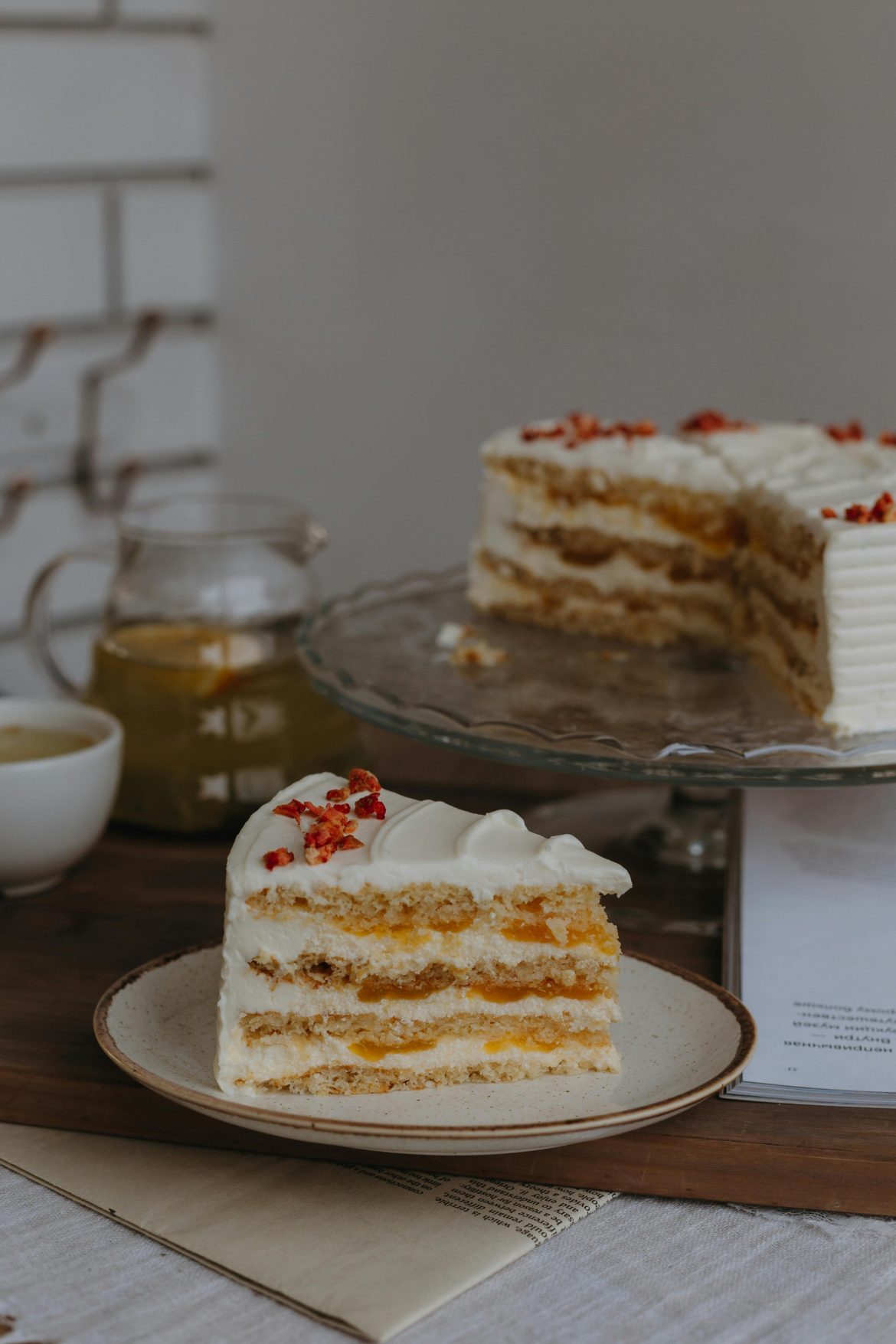Whether it’s a birthday celebration, a Sunday tea treat, or a quick pick-me-up after dinner, cake always finds its way to the table. But once the candles are blown out and the last slice is plated, what do you do with the leftovers?
How long can cake actually last – and where should you store it? The answer depends on the type of cake (and what’s inside it).
Read more: Our best Sunday bakes
Room temperature or fridge? It depends on the cake
Most cakes taste best at room temperature. Butter and oil-based cakes tend to dry out in the fridge, so it’s better to keep them covered on the counter – away from heat and sunlight. Wrap them tightly in cling wrap, beeswax wrap, or store them in an airtight container to lock in moisture.
Cakes with fresh fruit, dairy fillings, or whipped cream frostings, however, should be stored in the fridge for safety and freshness.
Cakes that can stay at room temperature
If your cake doesn’t contain perishable ingredients, it can safely sit on the counter for several days. These include:
- Layer cakes: Like vanilla, chocolate, red velvet, carrot, and hummingbird cake – keep covered and enjoy within 3-5 days.
- Pound cakes and loaf cakes: These dense, buttery cakes stay moist for up to a week.
- Chiffon, sponge, and angel food cakes: Light and airy, best enjoyed within 2–3 days.
- Flourless cakes: Rich and fudgy, these will keep for about 2-3 days at room temperature.
Tip: Avoid refrigerating these unless absolutely necessary – it can make them firm or dry.
Cakes that belong in the fridge
Some cakes simply need cooler conditions to stay safe and delicious:
- Cheesecake – always refrigerate once cooled. It stays fresh for up to 5 days.
- No-bake cakes and fridge cakes – made with cream or condensed milk, these must stay chilled.
- Cakes with whipped cream, mousse, curd, or custard fillings – refrigerate and enjoy within 3 days.
- Fruit-topped or fruit-filled cakes – best stored in the fridge after 24 hours.
If you’re serving the cake later, take it out of the fridge about 1–2 hours before to bring it back to room temperature – cold cake never tastes as good as one that’s softened slightly.
When you’re baking ahead
If you’re making a cake in advance, oil-based recipes handle refrigeration better than butter-based ones. Butter hardens in the fridge, which can dry out the cake, while oil keeps it soft. You can also freeze most plain cakes (without frosting or filling) for up to three months – just wrap them tightly before freezing.
Frostings and fillings: The game changers
- Buttercream and sugar glazes: Fine at room temperature for a couple of days.
- Cream cheese frosting: Although some say refrigerate immediately, many bakers keep it out overnight. If it’s particularly warm, it’s safer in the fridge.
- Whipped cream frosting: Best eaten within 24 hours as it loses its light texture.
Once you’ve sliced into a cake, press cling wrap or wax paper directly against the exposed sides to prevent it from drying out.
The sweet spot
The key to keeping cake fresh is understanding its ingredients. Simple, butter-based bakes prefer the counter, while cream-filled creations belong in the fridge. Either way, proper wrapping and a bit of care can make your leftover cake taste almost as good as the day it was baked.
Because really, the only thing better than cake – is cake that still tastes perfect the next day.
ALSO SEE: WHY DID MY CAKE SINK? 6 COMMON BAKING MISTAKES
Why did my cake sink? 6 Common baking mistakes and how to fix them

